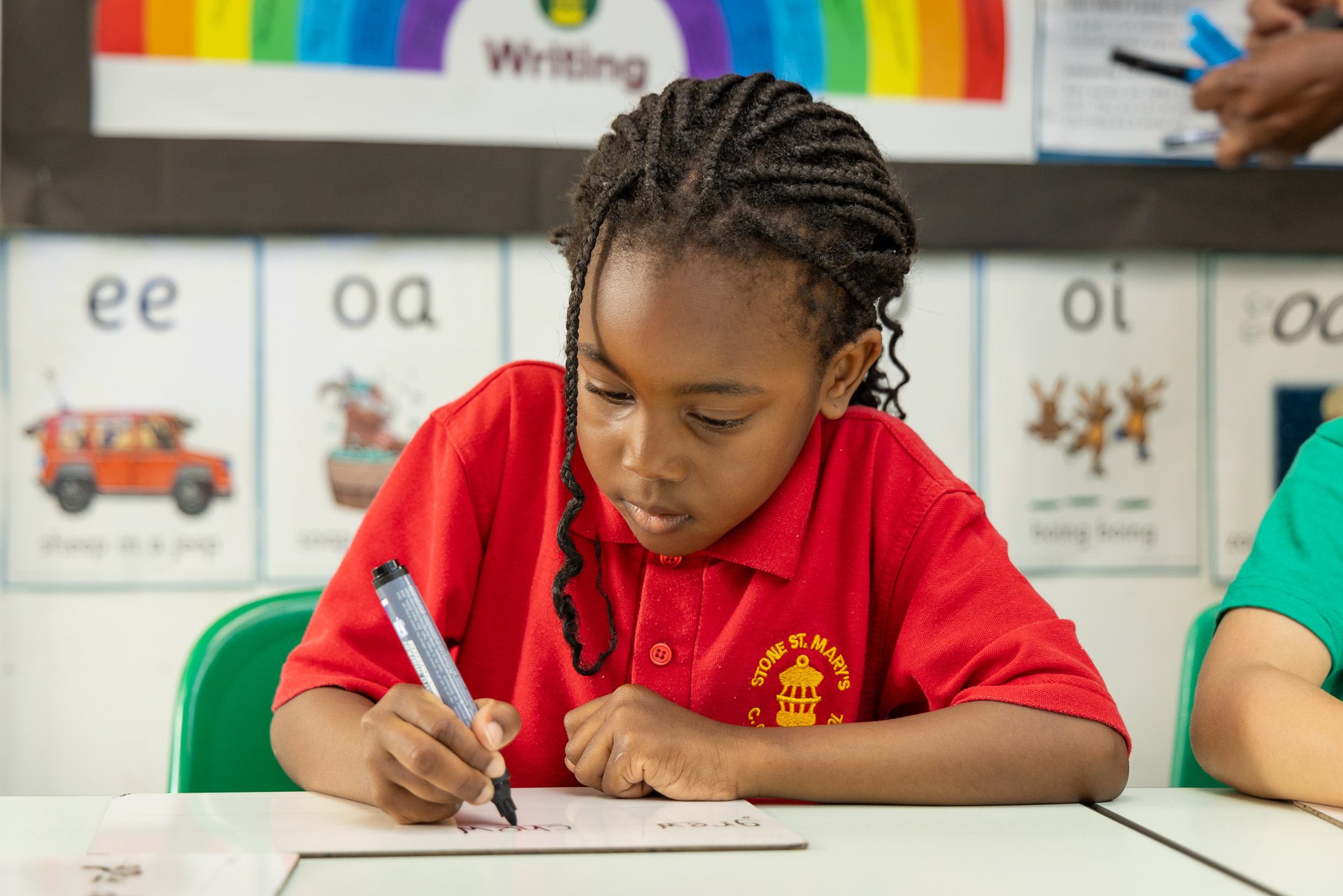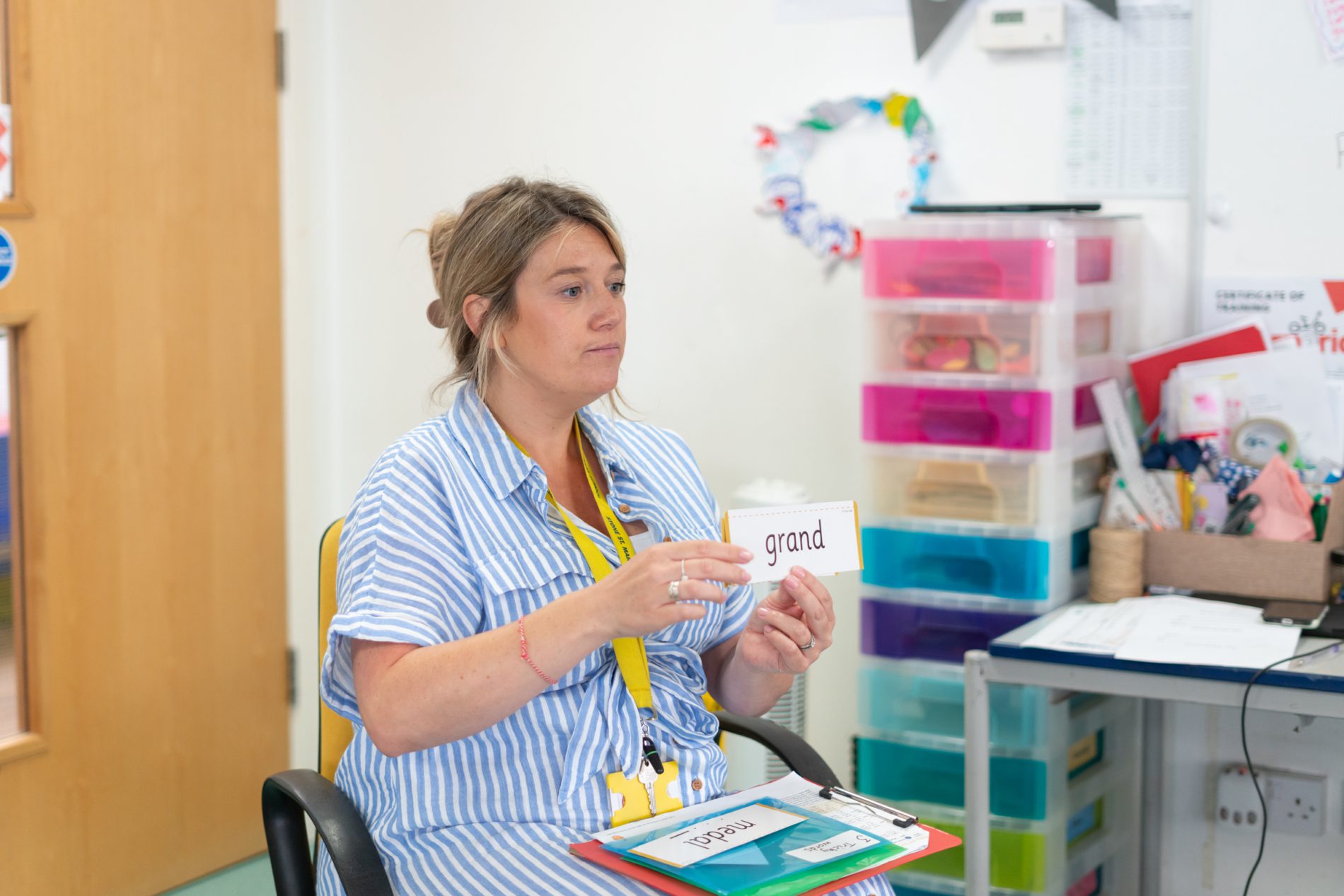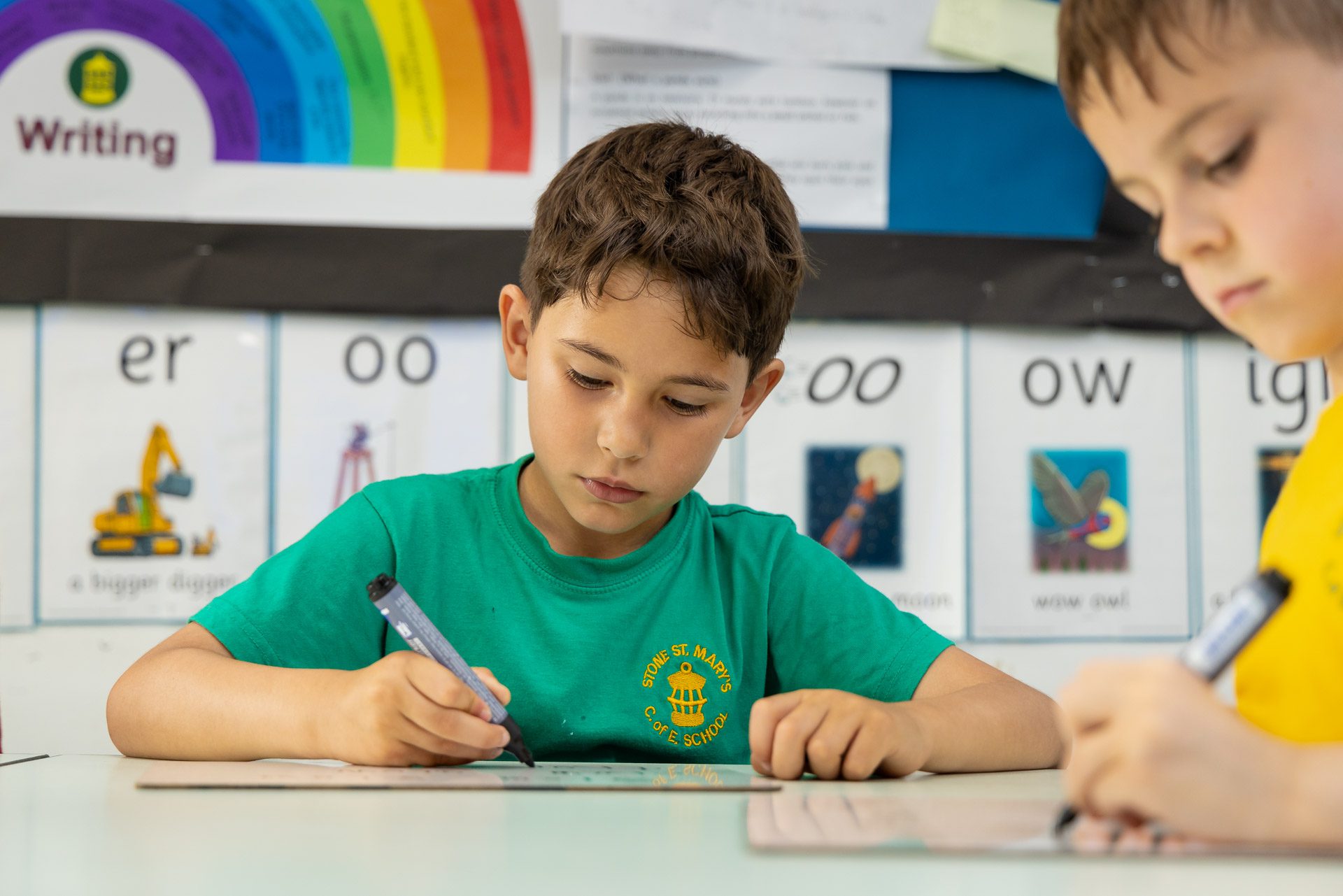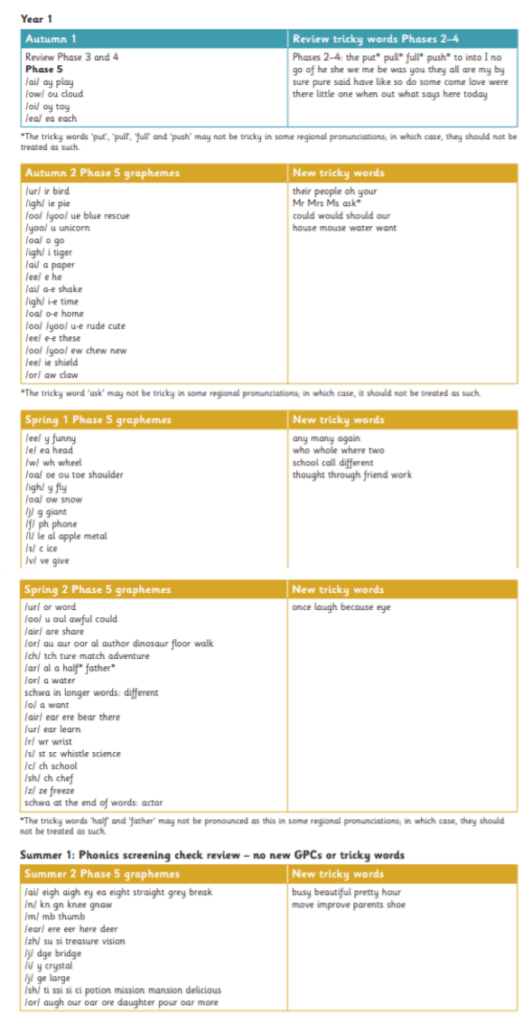Phonics Subject Leader: Mrs J Cutting
For any more information on Stone St. Mary’s Phonics Curriculum, please contact the office.
Phonics is a combination of skill and knowledge which aims to build children’s speaking and listening skills in their own right as well as to prepare children for learning to read and spell. At Stone St Mary’s C of E Primary School, phonics and early reading is taught using the structure of our systematic synthetic programme ‘Little Wandle Letters and Sounds Revised’.

Intent
Little Wandle Letters and Sounds Revised, is a systematic and synthetic phonics programme which ensures children build on their growing knowledge of the alphabetic code, mastering phonics to read and spell as they move through school. As teachers, we plan and adapt the programme to suit the needs of the children. Children begin by learning the sound each individual letter makes and progress onto identifying the sound a combination of letters make. The last and also vital skill, is to blend the phonemes (sounds) to create a word. Fluency by the age of 7 is the aim, phonic skills are a necessity throughout a child’s school life, assisting them to discover new words, and go on to read any kind of text fluently with the upmost confidence. Most importantly, we encourage our children to see themselves as readers for both pleasure and purpose.


Implementation
Phonics Lessons
In Reception and Year 1, children receive at least one phonics lesson a day with extra quickfire revision sessions on top of this. Monday-Thursday, each lesson contains review and revision, introducing a new grapheme/phoneme and spelling. Every Friday, children will revise their learning from the previous days.
Teaching reading: Reading practice sessions
We teach children to read through reading practice sessions three times a week. These are:
- taught by a fully trained adult to small groups of approximately six children
- use books matched to the children’s secure phonic knowledge using the Little Wandle Letters and Sounds Revised assessments
- are monitored by the class teacher, who rotates and works with each group on a regular basis
Each reading practice session has a clear focus so that the demands of the session do not overload the children’s working memory. The reading practice sessions have been designed to focus on three key reading skills:
- decoding
- prosody: teaching children to read with understanding and expression
- comprehension: teaching children to understand the text.
Impact
Our consistent approach to the teaching of our systematic phonics curriculum enables children to become confident, fluent readers and increasingly accurate spellers, which in turn, unlocks doors to the rest of the curriculum allowing children to flourish in all areas.
Assessment for learning is used:
- daily within the classroom. Not only is A4L used during phonics lessons, but throughout the school day. The joy of phonics, is that it plays such a huge role in reading and writing and therefore as a teacher, you can identify the children needing extra support in their reading and writing in all subjects.
- in weekly review lessons to assess gaps, address these immediately and secure fluency in GPCs, words and spellings.
- during reading practice sessions. Teachers and Teaching Assistants use a traffic light system to assess whether children have achieved the reading outcome. If the outcome has not been reached, it will be a focus in future reading sessions.
Summative assessment is used:
- every six weeks to assess progress, identify gaps in learning that need to be addressed, identify any children needing additional support and plan the Keep-up support that they need.

Phonics in Each Stage
Phonics starts within the first three weeks of Reception, with lessons starting at 10 minutes and building towards 30 minutes over the year. Before entering Year 1, the children will have been taught up to Phase 4. By Term 3, children begin reading practise sessions in Year R. The children apply their learning to reading a book in a small group setting, three times a week. At the beginning of each session, the children go over different sounds, words and common exception words that will be in the text and then have the opportunity to read through the text at their own pace. The first session focuses on decoding and identifying words and sounds in the text, the second session focuses on prosody (becoming a reader and reading with expression) and the third session focuses on comprehension.

In year 1, we will review phases 3 and 4 (these have been taught in reception). We then go on to introduce phase 5. Phase 5 learning contains alternative graphemes for previously taught phonemes and spelling patterns.
Just like Year R, Children in Year 1 will participate in Reading Practice Sessions with a teacher. The books the children will be reading in these sessions are the Big Cat Little Wandle Books. These books will be carefully matched to the child’s current reading level. The children will read the same book three times, focusing on different reading skills in each session. The three focuses are decoding, prosody and comprehension.

Year 2 begin the year by spending two terms revising Phase 5 (taught in Year 1), this will include applying Phase 5 into their writing and spelling. We timetable daily phonics catch ups for any child in Year 2 or 3 who is not fully fluent at reading or has not passed the Phonics Screening Check. These children urgently need to catch up, so the gap between themselves and their peers does not widen. We use the Little Wandle Letters and Sounds Revised assessments to identify the gaps in their phonic knowledge and teach to these using the Keep-up resources – at pace.
SEND Information
Children in Reception and Year 1 who need extra support with their phonics through interventions will also be read with an adult 1:1 more frequently.
At Stone St Mary’s C of E Primary School, we have begun to use the Little Wandle SEND programme for those who need extra support and a personalised learning structure. This gives those children that need adaptive teaching and learning to meet their needs the necessary support in class to fully access the supported Phonics curriculum. Daily interventions take place for these children during the whole class phonics teaching. The children do not attend the whole class phonics lesson and their individual phonics programme to manage their cognitive overload. The above areas are robustly and continuously monitored to ensure any gaps in learning are addressed.
Phonics Assessments
Phonics Screening Check
Children in Year 1 throughout the country will all be taking part in a Statutory Phonics Screening Check in June. Children in Year 2 will also take the check if they did not achieve the required result when in Year 1 or if they have not taken the test before. The phonics screening check is designed to confirm whether individual children have learnt phonic decoding and blending skills to an appropriate standard.
What Happens During the Screening?
The test contains 40 words. Each child will sit one-to-one and read each word aloud to their teacher. The test will take approximately 10 minutes per child, although all children are different and will complete the check at their own pace. The list of words the children read is a combination of 20 real words and 20 pseudo words (nonsense words). The pseudo words will be shown to your child with a picture of an alien. This provides the children with a context for the pseudo word which is independent of any existing vocabulary they may have. Pseudo words are included because they will be new to all pupils; they do not favour children with a good vocabulary knowledge or visual memory of words. We prepare children by introducing them to ‘alien’ words throughout their daily lessons using sounds that they have learnt. The pass mark last year was 32/40.
KS2 – Phonics
If the children need further support in their Phonics when they move into KS2, they will be put in an intervention that is tailored to them.
Home Learning
Phonic books will be sent home. Teachers will put the GPC’S the children have learnt in their Phonic sessions, in their Phonic Books, for the children to take home. Regular practice of these GPC’s will support your child in their reading and writing.


